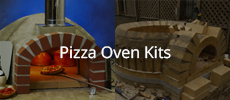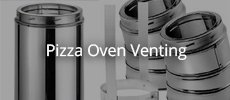Hey folks. I'm looking to create an 80cm dome with a primary 'thermal core' of grog + ciment fondu (refractory fire cement) + kiln dried sand. That will make up the first two inches. The final two inches will be the insulation layer - ciment fondu, kiln dried sand and vermiculite. How does that sound? Any advice on part amounts or any other pointers, i.e suggested thickness of each layer?
X
-
Hi Frank,
I presume you intend to cast a dome with these materials. By all means forge ahead with the plan, but I think your selection of materials is needlessly expensive and you'll have workability problems.
For the dome layer Ciment Fondu (calcium aluminate cement) is expensive stuff. Fondu and grog will also not produce a particularly workable mix so, depending on the method of application you use will most likely be extremely difficult to apply. For the service temperatures of a WFO the homebrew is both far more workable as well as being far cheaper. It also has the advantage of better working time than Fondu. Depending on your ambient temperature Fondu can go off before you have time to use a batch. Grog (crushed fire brick) is also not cheap and the advantage over sand is just not worth the extra expense IMO. The extra expense of kiln dried sand over normal builders sand is also a needless expense as the mix requires the addition of water to begin the hydration process. You should also consider the addition of reinforcing fibres as well as burnout fibres that provide a good measure of protection from steam spalling. A 2" layer for the inner dome is usually what is used to provide the required strength as well as a a good balance of sufficient thermal mass for general cooking and reasonable fuel consumption and heat up time.
Regarding your material selection for the insulation layer my prior advice re Ciment Fondu also applies. Because this layer will not have direct flame impingement Fondu is both expensive and way overkill IMO. Adding sand to the insulation layer increases thermal mass and conductivity in turn reducing insulation value as does the ciment fondu. Only just enough cement to bind the materials is required to produce a layer that will insulate well. Because vermiculite in the mix is so hygroscopic, the wet mix against the inner dome can present problems when eliminating the water from the oven after it is first built. A layer(s) of ceramic fibre blanket is far preferable over the dome because it is dry, then a vermicrete mix over the blanket can be applied which will even out the lumps and bumps of the blanket as well as providing a firm substrate for the outer stucco/render layer.
2" of insulation is not adequate. A minimum of 3" is more the usual choice (some folk say you can't have too much insulation), but the thickness conforms to the rule of diminishing returns.
I suggest you go to the "other oven types" section and read some well documented builds on cast ovens before proceeding with plans.
DaveKindled with zeal and fired with passion.
- Likes 1
-
Thanks for taking the time to offer your advice David. I had heard about the fondu having a short working time....perhaps the best way around that is to work in small batches. But I will look into the homebrew option. Is there a specific type of builders sand I should use for that inner layer? I remember reading that sharp sand has a silica content that will expand over a certain temp, causing cracks. this was the reasoning for going the crushed fire brick route. But if there is a cheaper sand option I will of course go that route.
Should I use reinforcing fibers for the entire dome or only the thermal layer?
I did consider using a thermal blanket and tried to circumvent that option but you've convinced me that it may be a sensible one.
For the vermicrete/insulation layer (on top of the blanket) i understand then that I can just use standard Portland cement to hold everything together, seeing as there is no direct impact from the heat. Likewise for a further render layer to hide all the bumps from the vermicrete - just another layer of Portland?
Last edited by frank1985; 10-20-2025, 02:05 PM.
Comment
-
Reducing the temperature by adding chilled water slows the reaction down so is an option to extend working time. All the materials undergo thermal expansion, but at different rates and those rates vary for different temperatures. It is one of the main reasons why ovens should be heated slowly to allow for these differences in thermal expansion of the materials used, to even out comfortably. A particularly vulnerable zone is 500 -650 C, which fortunately is just outside our service temperaturs, but also a very good reason not to over-fire an oven. So, depending on what you use can make a difference. Most oven owners are unaware of these problems and try to reach pizza temperature in as short a time as possible.If you want to be kind to your oven don't be in a rush.Originally posted by frank1985 View PostThanks for taking the time to offer your advice David. I had heard about the fondu having a short working time....perhaps the best way around that is to work in small batches. But I will look into the homebrew option. Is there a specific type of builders sand I should use for that inner layer? I remember reading that sharp sand has a silica content that will expand over a certain temp, causing cracks. this was the reasoning for going the crushed fire brick route. But if there is a cheaper sand option I will of course go that route.
Should I use reinforcing fibers for the entire dome or only the thermal layer?
I did consider using a thermal blanket and tried to circumvent that option but you've convinced me that it may be a sensible one.
For the vermicrete/insulation layer (on top of the blanket) i understand then that I can just use standard Portland cement to hold everything together, seeing as there is no direct impact from the heat. Likewise for a further render layer to hide all the bumps from the vermicrete - just another layer of Portland?
Builders sand is graded (a range of grain size) which is a desirable characteristic for the strength of a mix, as a range of aggregate size is important for the strength of standard concrete. . Some say the sharper more angular grains of silica sand provide better holding power, but I'm not convinced that there's much difference between angular or rounded edged grains. My belief is that the variety of grain size is far more important.
The silica content is far less of a problem than some are concerned about, particularly for the service temperatures we use.
I don't use any reinforcing fibres in the vermicrete because I'm trying to maximise its insulative properties by adding only enough cement for it to work as a suitable substrate. More strength/more cement means more thermal mass but less insulating. I find a 10:1 mix works well, but I use a 50/50 mix of fine vermiculite with medium perlite. for every litre of Portland cement in the mix, I throw in a handful of powdered clay which also helps stick the mix together making application easier. Tapping the surface with the flat of a trowel when the layer is completed leaves a beautifully shaped dome ready for the outer render once it's been purged of moisture.Last edited by david s; 10-20-2025, 09:13 PM.Kindled with zeal and fired with passion.
- Likes 1
Comment
-
Thanks again for the great advice, genuinely appreciated. I'm a little more confident now as to how to go about creating the dome.
I'm currently getting ready to start building the main stand/plinth from red bricks. How thin do you reckon I can go with the suspended concrete slab below the insulation layer? I will be using 10mm steel rebars in a grid pattern, placed at the bottom of the mould. Would 6.5cm be too thin? I specify this number as that is the height of my bricks, and I will be using one extra row of bricks as a form (in addition to a ply board at the foot of this row) pouring the concrete flush to the top.
Last edited by frank1985; 10-21-2025, 03:07 PM.
Comment
-
The thickness of the supporting slab depends on how strong it needs to be which in turn is determined by the weight it will be supporting. I assume your 80cm diameter oven means you want to have an internal diameter of 80cm. Most builders here would recommend a 100mm thick slab reinforced with steel. The piers that support the slab are also a determining factor and reducing the span between them either by using a central pier or cantilevering the slab outside the piers will reduce the strength requirement of the slab. Remember that the strength of a concrete slab is proportional to the square of its thickness. This means that a 50mm slab is only 1/4 the strength of a 100m one. Make sure you do a cross sectional plan (example attached) of the oven to determine the size of the supporting slab. You will also need to accomodate the extra length of the flue gallery. This usually means the supporting slab needs to longer than the width.
Last edited by david s; 10-22-2025, 01:19 AM.Kindled with zeal and fired with passion.
- Likes 1
Comment
-
As always, David's advice is terrific! It is also recommended that you setup some weep holes in the slab before you do the pour. That's much easier (IMHO) than drilling through later and hoping to avoid rebar . You can use pieces of rigid tubing about 1/2" (1.25 cm) set into the form base so their tops are just below the target depth of the hearth surface. That will allow you to easily screed the surface of the pour. Plan four or five of these negative form tubes under the oven footprint. David has also suggested putting a few of these weep holes around the perimeter of the oven, below the outer insulation layer.
. You can use pieces of rigid tubing about 1/2" (1.25 cm) set into the form base so their tops are just below the target depth of the hearth surface. That will allow you to easily screed the surface of the pour. Plan four or five of these negative form tubes under the oven footprint. David has also suggested putting a few of these weep holes around the perimeter of the oven, below the outer insulation layer.
Stuff some bread or paper into the top of each tube to minimize concrete filling the tube. After the pour has cured, run a rod from underneath to "pop the corks" of each tube. This will create a small crater around the weep holes, helping any water to gather & flow out. If at all possible, try to very slightly dome the hearth so water has a tendency to flow off the slab. We've also been advising putting scrap mosaic tile sheets or just pieces of tile between the top of the slab and the bottom sheet of insulation. This creates pathways for any water underneath your oven to "find" and escape out the weep holes.
Sorry to be so wordy , hope this makes sense and is helpful. Looking forward to your progress!
, hope this makes sense and is helpful. Looking forward to your progress!
Mike Stansbury - The Traveling Loafer
Roseburg, Oregon
FB Forum: The Dragonfly Den build thread
Available only if you're logged in = FB Photo Albums-Select media tab on profile
Blog: http://thetravelingloafer.blogspot.com/
- Likes 1
Comment





Comment